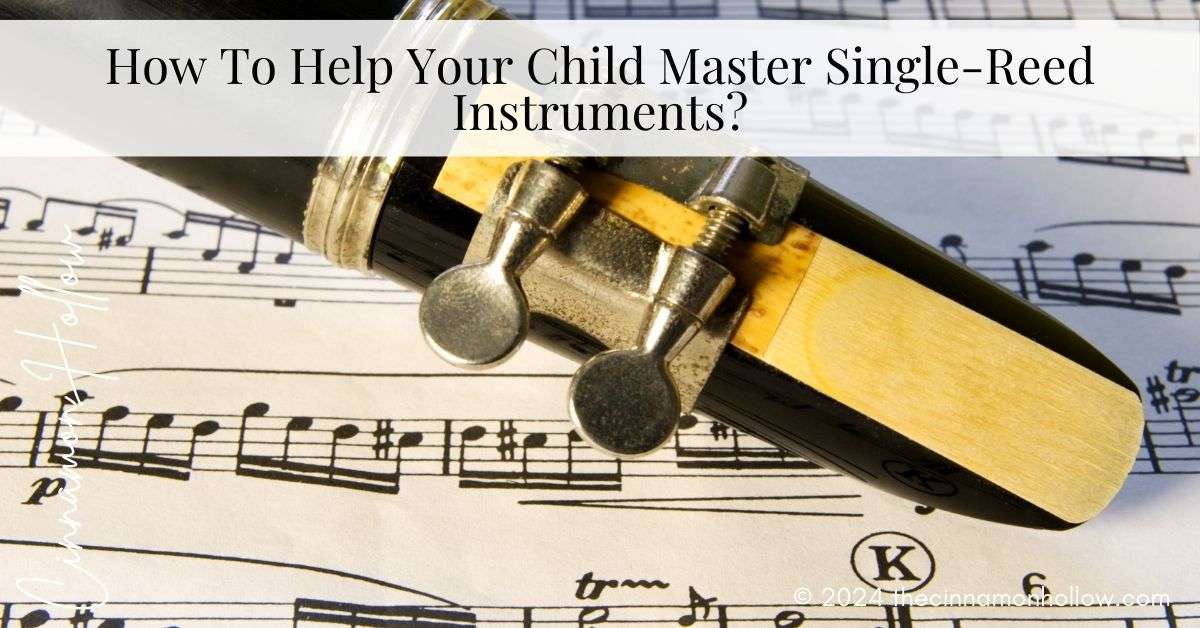- 1. Understand The Basics Of Single-Reed Instruments
- 2. Choose The Right Instrument For Your Child
- 3. Invest In Quality Equipment
- 4. Create A Comfortable Practice Environment
- 5. Encourage Proper Posture And Breathing Techniques
- 6. Support Their Practice With Fun, Engaging Exercises
- 7. Teach Patience And Perseverance
- 8. Consider Private Lessons For Personalized Guidance
- The Bottom Line
Watching your child learn a musical instrument is exciting, especially when they’re interested in single-reed instruments like the clarinet or saxophone. These instruments not only produce beautiful music but also give your child the chance to develop skills, discipline, and creativity.
However, learning a single-reed instrument can be challenging, especially for beginners. Thus, as a parent, your support and guidance can make a big difference. Here’s a guide on how you can help your child master a single-reed instrument. Go on reading!
1. Understand The Basics Of Single-Reed Instruments
First, let’s start with what single-reed instruments are. Single-reed instruments use a mouthpiece with a single piece of reed (often made of bamboo or synthetic material) that vibrates to produce sound. The clarinet and saxophone are the most common single-reed instruments, each with its unique sound and playing style. The clarinet is often associated with classical and jazz music, while the saxophone is used in a wider variety of genres, from jazz to rock and blues. By learning the basics, you’ll be able to understand your child’s progress and help them along the way.
2. Choose The Right Instrument For Your Child
Choosing the right instrument is a crucial first step. For beginners, the B-flat clarinet and alto saxophone are often recommended as they are standard and widely used. Consider your child’s physical comfort with the instrument. Take your child to a music store where they can hold and try out different instruments to see which feels most comfortable for them.
3. Invest In Quality Equipment
Single-reed instruments require specific equipment to produce a good sound, so investing in good quality bari sax reeds, mouthpieces, and cleaning supplies can make a noticeable difference. Reeds come in various strengths (usually rated from 1 to 5), and beginners often start with softer reeds, like a 1.5 or 2, which are easier to play. A good mouthpiece can also make it easier for your child to create a clear, consistent sound. Talk to their music teacher or an expert at the music store to find the right setup for your child.
4. Create A Comfortable Practice Environment
Nothing can beat the power of consistent practice. So, set up a comfortable space where your child can focus on their instrument. Choose a quiet area in the home where they can practice without distractions. A stand to hold their music, a metronome, and a comfortable chair can make the practice area more inviting. Encourage a routine practice time each day, even if it’s only 15-20 minutes at first. Consistency will help them build muscle memory and improve their skills over time.
5. Encourage Proper Posture And Breathing Techniques
Posture and breathing play an important role in mastering single-reed instruments. Poor posture can make it difficult to produce a strong sound and can even lead to discomfort over time. Encourage your child to sit up straight and relax their shoulders, with both feet flat on the floor. Proper breathing technique is also crucial—encourage them to take deep breaths from their diaphragm, not just from their chest, to produce a full, rich sound.
6. Support Their Practice With Fun, Engaging Exercises
Children can sometimes find repetitive practice boring, so try to make it engaging. For example, look for simple songs they enjoy, such as popular tunes, nursery rhymes, or easy pieces from their favorite movies or shows. Encourage them to play along with backing tracks or recordings, which can help with timing and add excitement to their practice sessions. Games and apps designed to help kids learn music can also make practice feel like play, helping them stay engaged and enthusiastic.
7. Teach Patience And Perseverance
Let’s be honest. Mastering any musical instrument takes time, patience, and a lot of practice. Children may feel discouraged when they don’t make quick progress, so remind them that every musician has gone through the same learning curve. Celebrate their small successes, whether it’s learning a new scale or playing a piece without squeaking. Let them know it’s okay to make mistakes and that they’re a natural part of the learning process.
8. Consider Private Lessons For Personalized Guidance
While school band classes or group lessons are beneficial, private lessons with an experienced teacher can provide personalized feedback that is invaluable. A teacher who specializes in clarinet or saxophone can focus on areas where your child may need extra help and provide tips that cater specifically to their needs. Many teachers also have experience in different music genres, allowing your child to explore various styles and keep their learning experience exciting and diverse.
The Bottom Line
Helping your child master a single-reed instrument can be an incredibly rewarding journey. While the clarinet or saxophone might seem daunting at first, with patience, encouragement, and the right tools, your child can develop skills that will benefit them for years to come.
Music is a wonderful gift to share, and as they progress, you’ll see their confidence grow and their love for music deepens. Remember, the most important part is enjoying the journey—each note, each song, and each moment of learning together.









